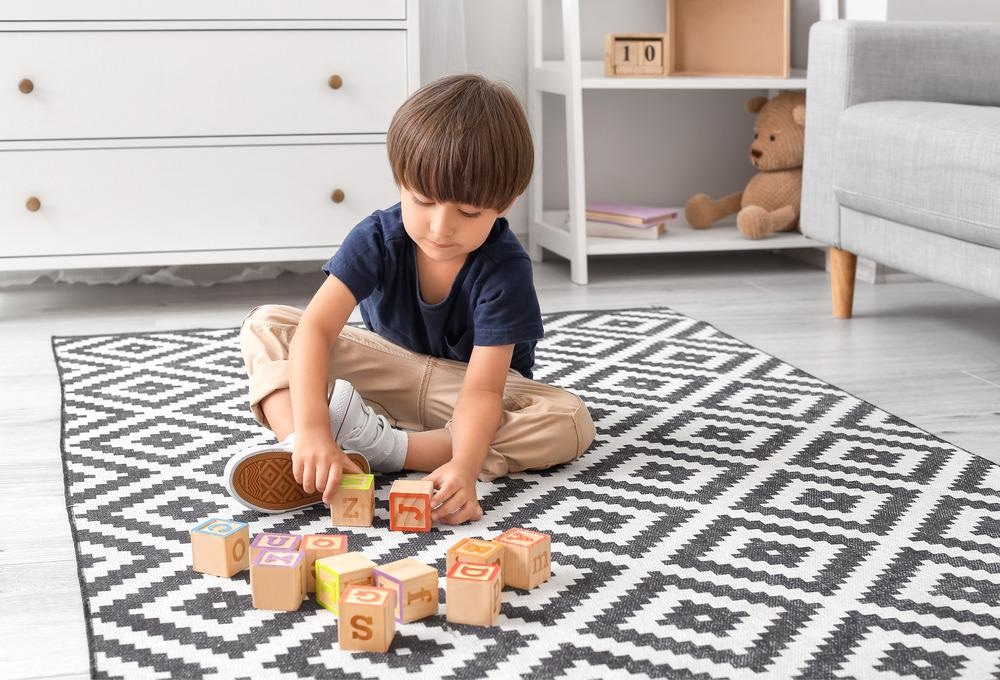In this interview, we speak to Amy Brin, MSN, MA, PCNS-BC, CEO of the Child Neurology Foundation, about the current landscape of neurological diagnosis in children and the importance of helping patients and their families through the diagnosis and treatment process.
Please could you introduce yourself and tell us about what inspired your career in child health?
I had been working as a nurse in hospice pediatrics in Tennessee, where part of my job was building programs for children who needed access to hospice medications. I did that for years and even stuck with it through a move to Kentucky. Then my family moved to Texas, and I decided rather than waiting a long time - as it often did - to get my new nursing state license, I started looking into nursing consulting jobs.
At the time, the executive director of CNF had a funder who was interested in supporting projects related to the transition of care, which was an area of expertise for me. At that point, CNF hired me on a contractual basis, and after a while, I realized that there was an opportunity for both me and CNF, who was also looking for an interim executive director. I said yes, and seven years later, I’m still here.
You are the CEO and Executive Director of the Child Neurology Foundation. Can you tell us more about why this Foundation was founded and what some of your aims and missions are?
After founding the Child Neurology Society in 1972, Dr. Kenneth Swaiman – one of the nation’s first pediatric neurologists – formally established the Child Neurology Foundation in 2001. The Society is the professional organization for North America’s pediatric neurologists, while the Foundation serves pediatric patients through advocacy, education, research, and support initiatives.
The Child Neurology Foundation aims to connect partners from all areas of the child neurology community, so those navigating the journey of disease diagnosis, management, and care have the ongoing support from those dedicated to treatments and cures. It is important to note that in the summer of 2021, CNF revised its mission to explicitly state its work with medical professionals caring for these children and families.

Image Credit: Pixel-Shot/Shutterstock.com
One in five children currently live with a neurological condition, yet many do not have an official diagnosis. Why is this, and what more should clinical settings, physicians, and policymakers be doing to ensure accurate diagnoses and treatments?
The practice of pediatric neurology is itself going through a shift. Whereas previously, child neurologists aimed to treat the neurologic symptoms affecting a patient’s quality of life (i.e., seizures, dystonia, behavioral disturbances). But with the incredible innovation in the treatment of pediatric central nervous system diseases, there are now treatment options available that can treat the actual cause or etiology of the symptom, not just the symptom itself.
To do this, though – appropriate diagnostic testing (genetic testing, Whole Genome Sequencing, etc.) is needed. Genetic testing and a diagnosis can also lead to more opportunities to participate in clinical trials, identify risks for other concerns, and connect with other families and advocacy groups specific to a condition.
The costs of genetic testing have dropped dramatically since technologies have become more sophisticated and accessible. However, there can still be costs or other barriers for families who need them.
In surveying clinicians in our network, they report that some obstacles to patients accessing genetic testing include a shortage of genetic counselors and getting insurance to approve orders. Changing the insurance landscape would be an ideal situation. Still, we are also focused on more direct ways to make a difference, such as nurturing connections and collaboration between doctors and patients.
Many families wait years for a diagnosis, and, even then, over 40% will receive a misdiagnosis. Why do some families sometimes have to wait for a diagnosis, and why are misdiagnoses of neurological conditions in children often inaccurate? What impacts do these misdiagnoses have on families?
Families wait for diagnosis (or receive a misdiagnosis) for many types of reasons symptoms are difficult to notice, obscure, shared across many diseases; or related to issues of care access, i.e., tests are expensive and have long waitlists, referrals to specialists take time, and there is a national shortage of child neurologists.
The impact of this issue is wide-ranging. There’s obviously the issue of physical health and how diseases can progress and impact a patient’s quality of life. But there’s also the emotional toll that a long diagnostic journey can take on a family. Without timely access to care and the right diagnosis, families wait longer for answers, longer for treatment, and longer for peace of mind.

Image Credit: fizkes/Shutterstock.com
When these diagnoses are finally made, it can often be difficult for the family. Why is it essential to help patients and their families through this process?
A diagnosis can be a relief in one sense, but it can also bring about a whole new world of information and confusion. It can often be so isolating to be a parent in this situation. But the positive is that some other parents and patients have walked this path before. That’s why we offer resources to meet families wherever they are. Whether it’s a downloadable toolkit, references for local support groups, a nationwide peer support program, or educational opportunities, we believe that every little piece we offer can make a difference to families living through unexpected hard times.
CNF is here, so no family walks alone. Isolation can be a suffocating feeling and has proven to be a risk factor for premature death. CNF’s programs attempt to attack the feeling of the isolation families experience. It is important for families to know they are not alone.
If diagnoses were made more efficiently and treatment was implemented faster, what impact would this have on the child and their families and healthcare as a whole?
The quick answer would be an improved quality of life. Not only to help provide precision medicine treatment plans for the patient and family but also a peace of mind that only “knowing what is going on with my child” can provide.
On the healthcare side, there would be massive cost savings. One study found that approximately 12
million people in the U.S. who seek outpatient medical care experience some form of diagnostic error. Another report estimates that $750 billion, or 30% of annual health care spending, is wasted on unnecessary services and other inefficiencies. It is important to note that children living with special health care needs constitute 20% of the U.S. pediatric population, but they are 80% of the pediatric expenditure.
There’s also the element of collaboration that can’t be quantified as easily. If overall, our healthcare industry can help patients access care and solutions more quickly, we will begin to see more opportunities for success. Each of these instances is also an opportunity for learning - to see how treatments can be applied across indications.
Diagnoses can often fuel research into new treatment options for neurological conditions, including clinical trials and genetic testing. How important is innovation to developing these new treatment options?
We believe that innovation and research is very important in furthering the treatment options available to rare disease patients. Since 2001, we have awarded over $4.1 million dollars in research funding and scholarships to child neurologists, medical students, and researchers working on treatments and cures for pediatric neurologic diseases. This year, we are offering four different scholarships, including the inaugural round of the Dr. Kenneth F. Swaiman Medical Student Scholarship in memory of our founder.
And, where there is research for the advancement of treatments and cures, there are accompanying clinical trials. Year-round, we maintain a database of clinical trials for which patients in our community might be eligible.
We hope that by encouraging both patients and doctors on both ends of the research and trial spectrum, we can create meaningful opportunities for patients looking to improve their lives and researchers looking to test their groundbreaking ideas.

Image Credit: Myroslava Malovana/Shutterstock.com
On the Child Neurology Foundation website, you offer a range of tools and resources for parents, helping them through these difficult times. How important is education in diagnosis management?
Nobody ever expects or asks to be diagnosed with a rare neurological disorder. And once they are, it drastically changes their lives in countless ways. Navigating this new world of chronic illness requires them to interact with and understand the healthcare industry like they otherwise might not need to.
Our vision is a world where every child can live up to their full potential, and everything we do revolves around helping them achieve this. As best as we can, we want to take the guesswork out of life with a neurological condition. So we provide educational resources about some of the more complicated things like plans of care and clinical trials and support for parents dealing with behavioral challenges or sending a child back to school after they receive a life-changing diagnosis.
Whatever someone is going through, someone else in our community has been there before. Our goal is to harness the collective experience of living with a rare disease to create resources and tools to help others on the same journey.
Are you involved in any exciting upcoming projects? If so, what are they?
We recently announced that we are collaborating with Unite Us, the nation’s leading technology company connecting health and social care services, to launch a new program that connects families in the Child Neurology Foundation’s network to vital resources.
We heard directly from families in our network that they need a comprehensive platform that can help them sort through and connect with the resources that might be available to them. Working with a tech company like Unite Us allows us to improve access to critical care as well as peripheral support services that our patients are asking for.
This year, we are also launching some initiatives around educating both patients and physicians about care coordination. Working with care coordination experts, we are designing a CME course to help child neurologists, and other healthcare professionals discuss how to implement a care coordination program effectively and include the patient/family experience.
With continued technological advancements surrounding clinical diagnostics, are you hopeful that neurological conditions will start to be recognized faster in the future? Are there any particular areas within child health that you are looking forward to?
While the pandemic has caused obstacles in every area of healthcare, we are optimistic that progress is still being made, perhaps even because of how the pandemic has accelerated the focus on tech-enabled delivery of care. Researchers have been relentless about pursuing their ideas. We’re seeing more access to accurate genetic testing, and doctors are continually willing to educate themselves on how to best care for rare disease patients.
We are very excited about the opportunities that advanced genome sequencing research can provide. It can play in shortening the diagnostic journey for children living with a neurologic condition, we are working on expanding the usage of genetic testing in the diagnostic process.
CNF Celebrates 20 Years - Join Us In Our Next 20
Where can readers find more information?
Our focus is on helping families, and a big part of that is working with doctors. We’re open to research collaborations, sharing clinical trial news, and doing an annual physician needs assessment to learn about concerns, opportunities, and challenges that pediatric neurologists face.
The information from this year’s survey will be available later this summer. To be notified when the 2023 survey opens next spring, subscribe to our newsletter. Also, follow us on social media on Facebook, Instagram, and Twitter.
About Amy Brin
Amy E. Brin, MSN, MA, PCNS-BC, has been working on behalf of children/youth living with special needs and their families for over two decades. Through her leadership, the Child Neurology Foundation has experienced consistent and unprecedented growth in strategic partnerships, programming, and overall operations.
By trade, Brin is a Board-certified pediatric advanced practice nurse. Prior to joining CNF, she led the development and provision of care in pediatric and perinatal palliative and hospice programs. She served as a national consultant, building systems of care for children and youth living with special healthcare needs, with specific focus in program development for complex, chronic care models of service.
Brin is a published author, award winning speaker and trusted convener, which has earned her International recognition as recipient of the Platinum Facilitation Impact Award from the International Facilitators Association, as well as being elected Chair of the Epilepsy Leadership Council.
And, if you asked Amy what is most important, she’d most likely convey her strong belief that there’s never a bad time to eat pizza, that creating a better tomorrow for all children is a shared responsibility for this world… and that her greatest treasures in this life are her sons, Ari and Roman.